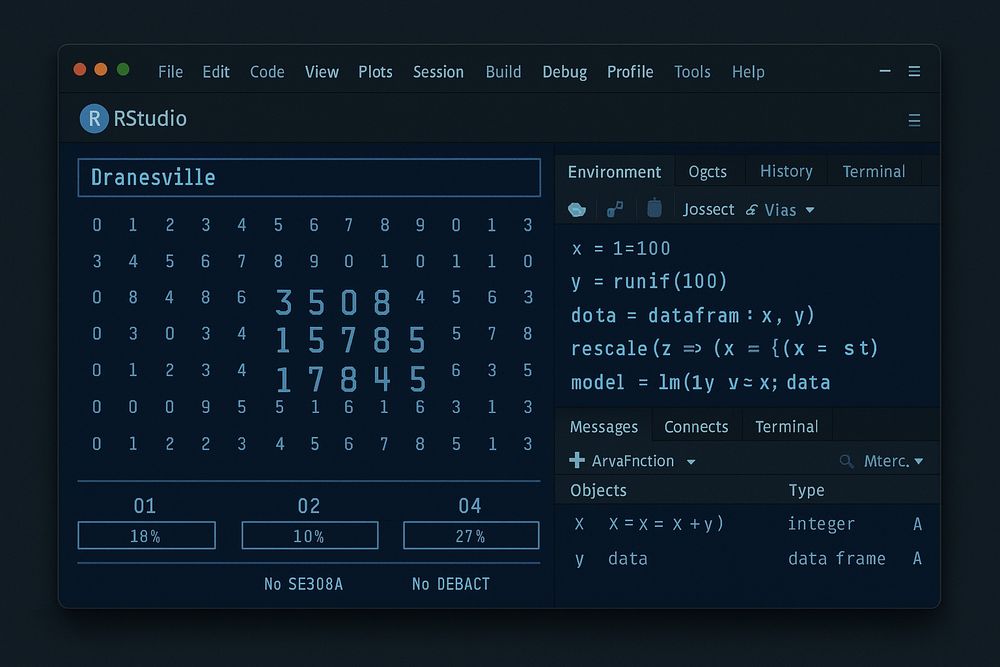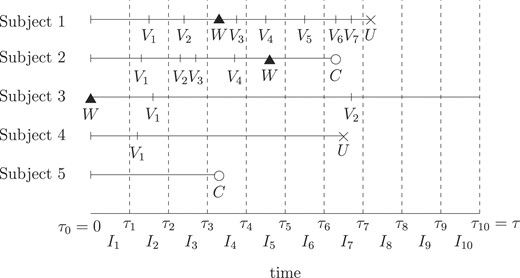
Research site: stablemarkets.netlify.app
#statsky
The key distinction is btwn (1) "known" vs (2) "unknown" quantities: Make inferences about (2) conditional on (1).
Want cond. avg trt effects? Condition on data, make inferences about regression lines

The key distinction is btwn (1) "known" vs (2) "unknown" quantities: Make inferences about (2) conditional on (1).
Want cond. avg trt effects? Condition on data, make inferences about regression lines
This paper, in press at Epidemiology, was really fun to write: it discusses biases that may arise & corresponding adjustment via g-methods
arxiv.org/abs/2508.21804

This paper, in press at Epidemiology, was really fun to write: it discusses biases that may arise & corresponding adjustment via g-methods
arxiv.org/abs/2508.21804

Why does sample-level inference need stronger assumptions? When should/n’t we impute counterfactuals? How does this differ from g-computation? Do we really need to Bayesian bootstrap?


Why does sample-level inference need stronger assumptions? When should/n’t we impute counterfactuals? How does this differ from g-computation? Do we really need to Bayesian bootstrap?
www.arxiv.org/abs/2508.02970
When doing DiD, many inspect the difference in trends in the pre-period to “check” whether parallel trends (PT) holds.
But PT is fundamentally uncheckable since it must hold in the post-period as well.
What’s going on?

www.arxiv.org/abs/2508.02970
When doing DiD, many inspect the difference in trends in the pre-period to “check” whether parallel trends (PT) holds.
But PT is fundamentally uncheckable since it must hold in the post-period as well.
What’s going on?
Slide deck 1 is just a primer on Bayesian inference. Slide deck 2 is on the Bayesian causal stuff.
github.com/stablemarket...

Slide deck 1 is just a primer on Bayesian inference. Slide deck 2 is on the Bayesian causal stuff.
github.com/stablemarket...
Virtual registration/attendance options are available.
There are sessions on a lot of other great topics - see full agenda here:
dbei.med.upenn.edu/news-events/...
#statsky

Virtual registration/attendance options are available.
There are sessions on a lot of other great topics - see full agenda here:
dbei.med.upenn.edu/news-events/...
#statsky
Thoughts: I need to think more on where bootstrapping makes sense in a bayesian setting. But here's a tutorial.
#stats #bayesian #bayes #bootstrap #resampling
towardsdatascience.com/the-bayesian...

We’re so proud to celebrate your achievement!

We’re so proud to celebrate your achievement!
Independent priors on propensity score & outcome models often imply a strong prior on no *measured* confounding - a prior belief that 1) we rarely hold and 2) leads to bad frequentist performance
tinyurl.com/2udmbf6a
#statsky
Independent priors on propensity score & outcome models often imply a strong prior on no *measured* confounding - a prior belief that 1) we rarely hold and 2) leads to bad frequentist performance
tinyurl.com/2udmbf6a
#statsky

Session 50: Monday 1:45-3:30
Talk info:
www.enar.org/meetings/spr...
Full paper:
academic.oup.com/biometrics/a...
#StatsSky

Session 50: Monday 1:45-3:30
Talk info:
www.enar.org/meetings/spr...
Full paper:
academic.oup.com/biometrics/a...
#StatsSky
Check out work by Biostats PhD student Han Ji now accepted at Observational Studies.
Convenient syntax, help files, custom S3 classes, & efficient MCMC via Stan in back-end
arxiv.org/pdf/2310.12358
github.com/RuBBiT-hj/ca...



Check out work by Biostats PhD student Han Ji now accepted at Observational Studies.
Convenient syntax, help files, custom S3 classes, & efficient MCMC via Stan in back-end
arxiv.org/pdf/2310.12358
github.com/RuBBiT-hj/ca...

t.co/ekVZXcDqJy
t.co/LuTO9VSJfs


t.co/ekVZXcDqJy
t.co/LuTO9VSJfs
1) The empirical Bayes derivation of the James-Stein Estimator
2) the (first order) equivalence of Bayesian bootstrap covariance, Efron’s bootstrap covariance, and the robust sandwich covariance estimators


1) The empirical Bayes derivation of the James-Stein Estimator
2) the (first order) equivalence of Bayesian bootstrap covariance, Efron’s bootstrap covariance, and the robust sandwich covariance estimators
arxiv.org/abs/2501.08231


arxiv.org/abs/2501.08231

